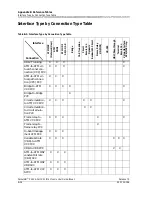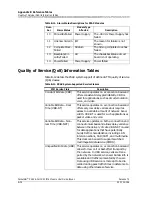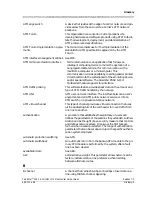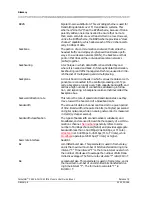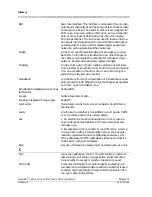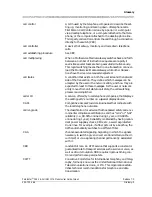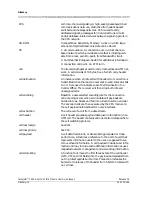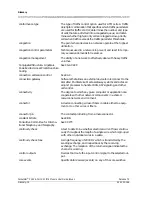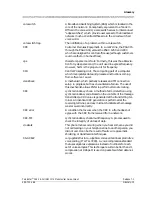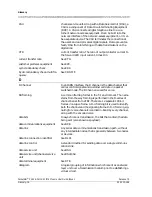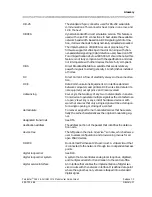
Glossary
Glossary-2
255-700-166
PacketStar
®
PSAX 6-Port DS1 IMA Module User Guide
, Issue 1
Release 7.0
ABR
available bit rate. ABR changes after a connection is estab-
lished, and allows the receiving device to accept data from a
variety of transmitting devices which are operating at differ-
ent speeds, without the need to set up data rates in advance.
ACELP
algebraic code excited linear prediction. This voice-coding
algorithm standardized by the ITU-T in G.729 provides voice
compression. ACELP is specified by the Frame Relay Forum as
one of the minimum voice compression algorithms required
for network-to-network interoperability.
active/standby mode
Alternate terms for working/protection. See Automatic pro-
tection switching.
adaption service permanent virtual
circuit
See AS-PVC.
adaptive differential pulse code mod-
ulation
See ADPCM.
address
A data structure or logical convention used to identify a
device on a network.
address mask
A bit combination used to describe which portion of an
address refers to the network or subnet, and which portion
refers to the host.
address resolution protocol
See ARP.
administrative weight
See AW.
administrator
A user who has full read-write capabilities on all PSAX
devices managed by the AQueView
®
Element Management
System.
ADPCM
adaptive differential pulse code modulation. This type of
audio encoding is a reduced bit rate variant of PCM audio
encoding, which uses fewer bits by determining the difference
between consecutive speech samples.
advertising
In the context of packet switching, a reference to routing or
service updates that are sent at specified intervals. This
method allows other routers on the network to maintain lists
of usable routes.
aggregation
A reference to an instance when the border nodes at the ends
of an outside link assign a token number to the outside link,
and the same number is associated with all uplinks associated
with the outside link (an aggregation token). In the parent
and all higher-level peer groups, all uplinks with the same
aggregation token are aggregated.
AIS
alarm indication signal. This signal is used in-band mainte-
nance to ensure that a line is working properly.
alarm
An message that warns an administrator about a network
problem.
alarm indication signal
See AIS.



